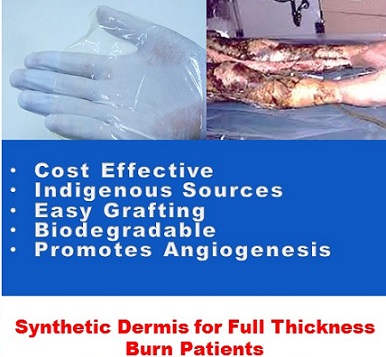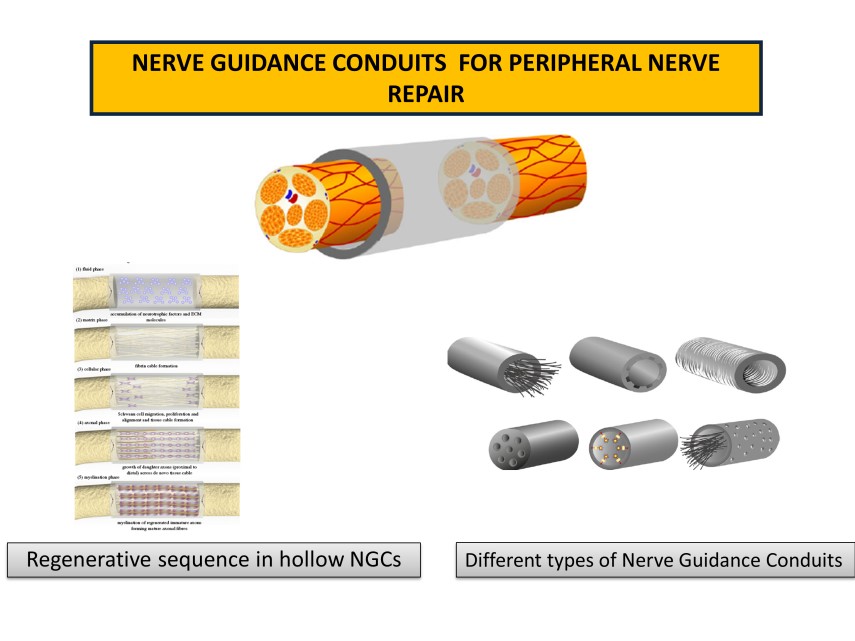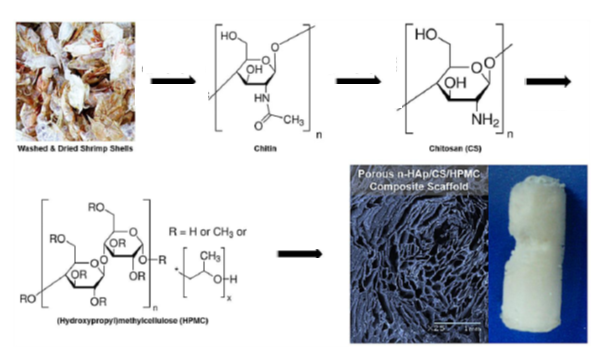Research Areas
Skin tissue engineering for burn patients
A valuable breakthrough in the scientific field is the development of artificial skin, which is being used in major burn patients. The plus point of such discovery is that the artificially-grown skin can be stored in tissue banks and could be used when it is needed. The major drawback with existing burns treatment using skin grafting is that the patients need to wait for a number of weeks until the skin is grown from patients own healthy skin, and also the donor site is a new wound which is a potential site for infection. In addition donor site is limited and extensive burns make it impossible. Angiogenesis is the growth of new blood vessels by capillary sprouting from pre-existing blood vessels. It is critical to the development of hybrid organs and tissue constructs, which require a blood supply to provide nutrients needed for cell viability.


Nerve Guidance Conduits (Ngc) For Peripheral Nerve Repair
Aim of this project is to develop polymer based NGCs which are biocompatible, biodegradable and fulfill all requirements of an ideal NGCs. Reported artificial NGCs were successfully used for distances up to 30 mm but not more as thin fascicles regenerate more easily that large caliber nerves and successful regeneration of fiber motors is also difficult that sensory axons fascicles regenerate more easily than large caliber nerves. The usefulness of futures NGS will be determined by their ability to support nerve growth over long distances. Furthermore there is also need of cell-free scaffolds that can be used on demand by neuro-surgeons.
Composite Scaffolds For Trabecular Bone Repair Applications
Trabecular or cancellous bone is a highly porous osseous tissue forming approximately 20 % of the human skeleton. It encloses numerous hollow spaces and thus, appears honeycomb- or sponge- like. It has high surface area to mass ratio due to high level of porosity and low density. The research focus in this project porous biocomposite scaffolds based on HAp and biocompatible polymers, thus complementing the benefits of two phases and emulating natural bone architecture. In this covenant, natural polysaccharides, e.g. cellulose, chitin, chitosan, etc. and their derivatives have become the matrices of choice to develop composite scaffolds for tissue engineering applications

Synthesis Of Bioceramic 3d Scaffolds For Guided Bone Generation:
A key component for successful bone regeneration is the scaffold that serves as a template for cell interactions and the formation of bone-extracellular matrix to provide structural support to the newly formed tissue. Recently, working at the forefront of research into the development of novel bioceramic scaffolds. Ultimate aim is to get scaffolds with mechanical properties similar to those of the bone repair site, good biocompatibility and biodegradability at a rate commensurate with remodeling.

Development Of Azole Based Potential Protein Kinase Inhibitors
Enzymes are reactive centres for every biochemical process and all enzymes are proteins with the exception of some catalytic RNA. The ability of enzymes to transfer and specifically bind to the molecule along with the stabilization of the transition state gives them extraordinary catalytic power. Phosphorylation is one of the key processes in nature and is specifically responsible for switching the cellular activities. The transfer of these phosphoryl groups to amino acid residue is catalyzed by enzymes called protein kinases. These kinases play an important role in signal transductions and they are just like switches which can turn on or off cellular activity. There are many diseases like cancer, diabetes, inflammation etc which are related to the protein kinase-mediated signalling pathway and it was anticipated that this would stimulate searches for inhibitors. However, in contrast to other enzyme systems, nearly 518 protein kinases have been identified until now and account alone for 2% of the human genome. Inhibitors of these protein kinases have therefore great potential as bioactive compounds either in the form of pharmaceutical drugs or as crop protecting reagents. There are many different classes of protein kinase inhibitors like PKC inihibitors, tyrosine kinase inhibitors aniline-pyrimidine inhibitors etc. The target of present project is to prepare the PKI’s based on pyridine-pyrimidine structures. In target molecules the aromatic rings will be displaced by other heterocylces like thiazole, oxazole, imidazole etc to obtain more target oriented and biologically active drugs.